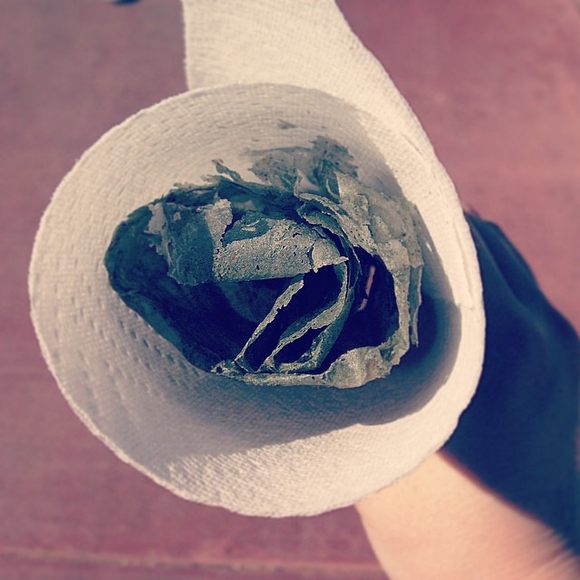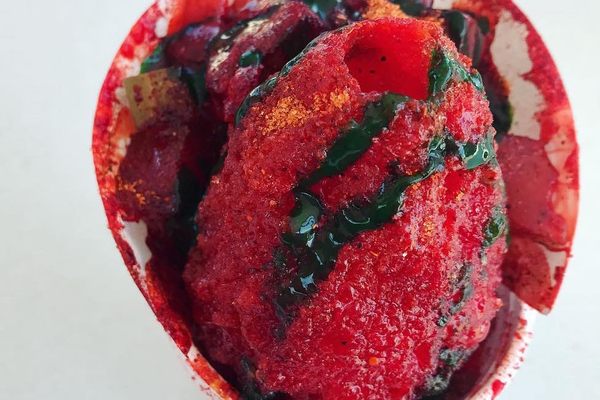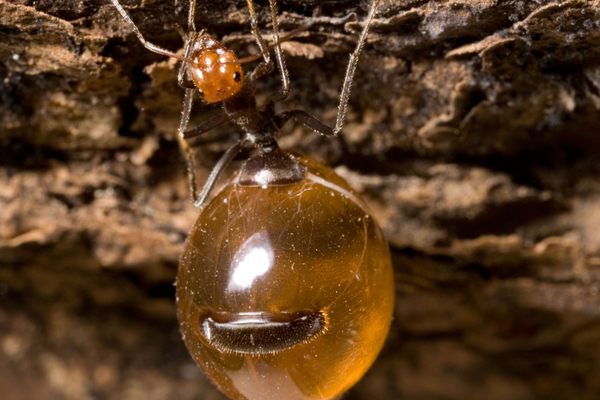Prepared Foods
Piki Bread
This ultra-thin blue corn delicacy is traditionally eaten at Hopi weddings.
The term “bread” is misleading in the case of piki, which is more like phyllo. It is especially significant within the culture of Arizona’s Hopi tribe. Women mix finely ground blue corn with water and juniper ashes, and spread the resulting gray gruel on a hot, flat cooking stone by hand. It is then immediately peeled away in a single, nearly translucent sheet and rolled up. Production is labor-intensive, which is why piki is generally reserved for special occasions such as Hopi weddings.
“Wedding” is also a misleading term with respect to the Hopi, since a traditional marriage can take years to complete. Numerous ceremonies involving the entire families of the bride and groom are required, including a good-natured mud fight between in-laws to extirpate any possible acrimony before the final betrothal. Voluminous gift-giving and food are key to the enterprise, with piki bread at its center. On the day of the final ceremony, the bride and groom will eat piki together.
Corn in general is, of course, central to Native American culture, and blue corn is particularly sacred to the Hopi. Each of the four main colors of corn represents a compass direction, and blue corn is associated with southwest. The color is also generally associated with rain, a precious commodity in the arid climate of the Colorado Plateau, and Hopi cosmology features stories of the Blue Corn Maiden, whose exploits determined the growing seasons. The piki baking stone itself is quarried by the men of the tribe and polished to perfection by the women. Baking stones are so valued that they are handed down through generations.
Eating piki can be tricky since it is so thin and fragile that it disintegrates into flaky crumbs easily. Blue corn by itself is sweet and when combined with the juniper ashes, it creates a flavor that Slow Food USA describes as “earthy, smoky and a little sweet.” Non-Hopi who eat piki will often combine it with sauces and dips, which is distinctly non-traditional.
Where to Try It
-
The Turquoise Room at La Posada Website
303 E 2nd St, Winslow, Arizona, 86047, United StatesReservations are highly recommended and it is best to call ahead to see if they have piki available.
-
It is always best to call ahead to see if they have piki available.
Written By
 Edward Denny
Edward Denny
Sources
- www.slowfoodusa.org/ark-item/piki-bread
- www.jstor.org/stable/pdf/6351.pdf?refreqid=search%3A0a7247a9471cc5d6927f71e93d1ea2ae
- aifg.arizona.edu/film/hopi-indian-0
- books.google.com/books?id=gFkoDwAAQBAJ&pg=PT77&lpg=PT77&dq=hopi+wedding+mud+fight&source=bl&ots=7FdDuNEYeJ&sig=BFFE12c_oPQiWF67njX5U57eUgo&hl=en&sa=X&ved=2ahUKEwjws5bhp6ndAhVtkeAKHelhA0UQ6AEwF3oECAEQAQ#v=onepage&q=hopi%20wedding%20mud%20fight&f=false
- books.google.com/books?id=bETh7YRsJc0C&pg=PA20&dq=hopi+wedding+piki+bread&hl=en&sa=X&ved=0ahUKEwjJ5trvqKndAhWOUt8KHXFrCO8Q6AEIOTAD#v=onepage&q=hopi%20wedding%20piki%20bread&f=false
- www.firstpeople.us/FP-Html-Legends/Blue_Corn_Maiden_And_The_Coming_Of_Winter-Hopi.html
- santafe.org/blog/native-foods-soul/
- www.bustle.com/articles/144199-5-myths-about-changing-seasons-to-celebrate-the-end-of-winter













